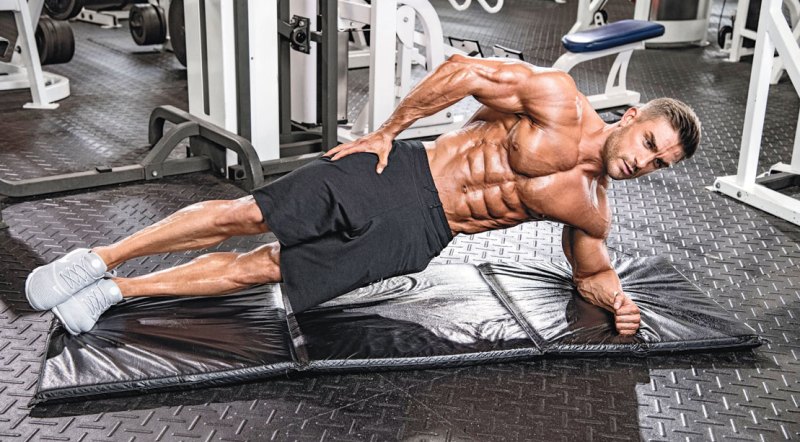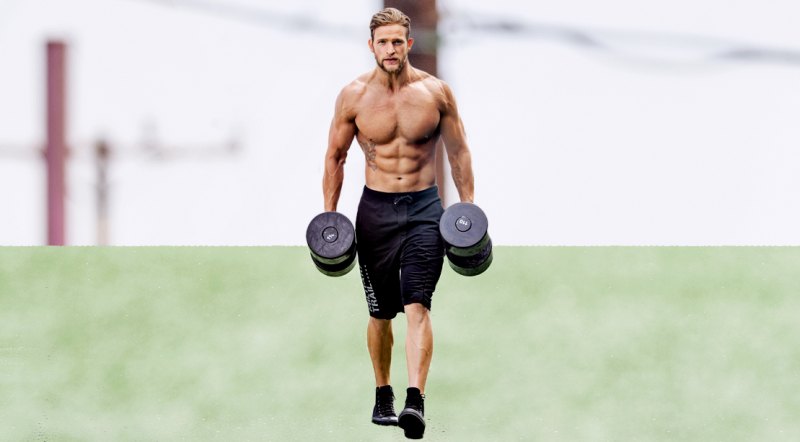
The oblique muscles are one of the most overlooked and difficult muscle groups to grow. You know what it takes to get a solid six pack; the diets, the exercises, and the workout programs. Having a low enough body fat to even see your ab muscles is the first way to show them off. That’s where a proper diet and exercise program comes in handy. But if you truly want to have your side muscles pop, you need to start doing oblique exercises.
Even if you are not at a body fat level where your obliques look good, you still need to train them. The oblique muscle group plays a major role in many different movement patterns, and is an essential part of the core. You need to train these muscles for everyday function.
The external and internal oblique muscles rotate and side bend the trunk. The core muscles also contribute to spinal stability, hip rotation, and anti-lateral flexion. You cannot simply perform rotation exercises like woodchoppers, side to side hanging leg raises, and side crunches to improve their strength and function. You also need to provide rotational stresses and resist those stresses by not letting the body bend to the side or let the lumbar spine rotate. There are only a few exercises that do wonders for both the strength and appearance of the obliques.
Let’s take a look at some oblique exercises that get the job done better than traditional oblique exercise like side bends and sit-ups.

Side Plank
The side plank is great to engage the lateral core stabilizers such as the oblique. Ditch side bends and instead perform the side plank row. The lateral core stability muscles are actually anti-lateral flexion, and are not made to bend side to side. It also allows us to work each side oppositely to help reduce muscular imbalances. While just holding a plank is beneficial by itself, adding dynamic movements will increase its benefits. Trying to add a cable or band row to increase the anti-rotary tension effect, and to increase difficulty. Simply set up in a side plank position a few feet away from a cable apparatus, or a place where you can attach a band. Maintain a neutral spine (a perfect side plank position), and then perform a rowing/pulling motion.
2 OF 5

Farmers Carry
Grab a dumbbell or a kettlebell that would be demanding to carry in only one hand for about 40 yards. Make sure to maintain superb posture at all times as you walk that distance. Switch hands and repeat. The reason this works so well is the opposite side core is trying to dynamically stabilize the spine while you hold the weight and move with it. Makes sense why it’s so hard to carry that baggage through the airport with one hand. Those deep core muscles have to stabilize and work to help support your body just like a plank. The suitcase carry is by far the most functional type of plank to improve dynamic stabilization. Give it a shot and you will see the benefits in no time. Don’t be surprised if you wake up the next day with some sore obliques.
3 OF 5

Cable Pressout
This exercise has become popular in part by many trainers seeing its benefit as an anti-rotation exercise. But I also see the benefit to the oblique group as well. You can perform this exercise on one knee, both knees, or standing. Some key things to keep in mind are neutral posture, core tension, and hold the press-out. Don’t go too fast, and feel the contraction on each rep.
4 OF 5

Landmine Anti-Rotation
This exercise is a total core builder, but the oblique group is sure to take a beating. If you do not have landmine apparatus with a handle, you can simply place a barbell in a corner of the room. The key on this exercise is NOT to move the hips as you draw a half moon shape with the bar. Brace your entire body and do not move anything besides your arms as you perform the movement.
5 OF 5

Side-to-Side Ab Wheel Rollout
Rollout variations are primarily anti-extension movements that hit the anterior core (abdominal wall) pretty hard. If you want to pay particular attention to the obliques, perform the movement by going side to side. I recommend starting out with a rounded back, and, as you rollout, avoid arching the back too much or else you will feel it more in the lower-back muscles than you do the obliques.


